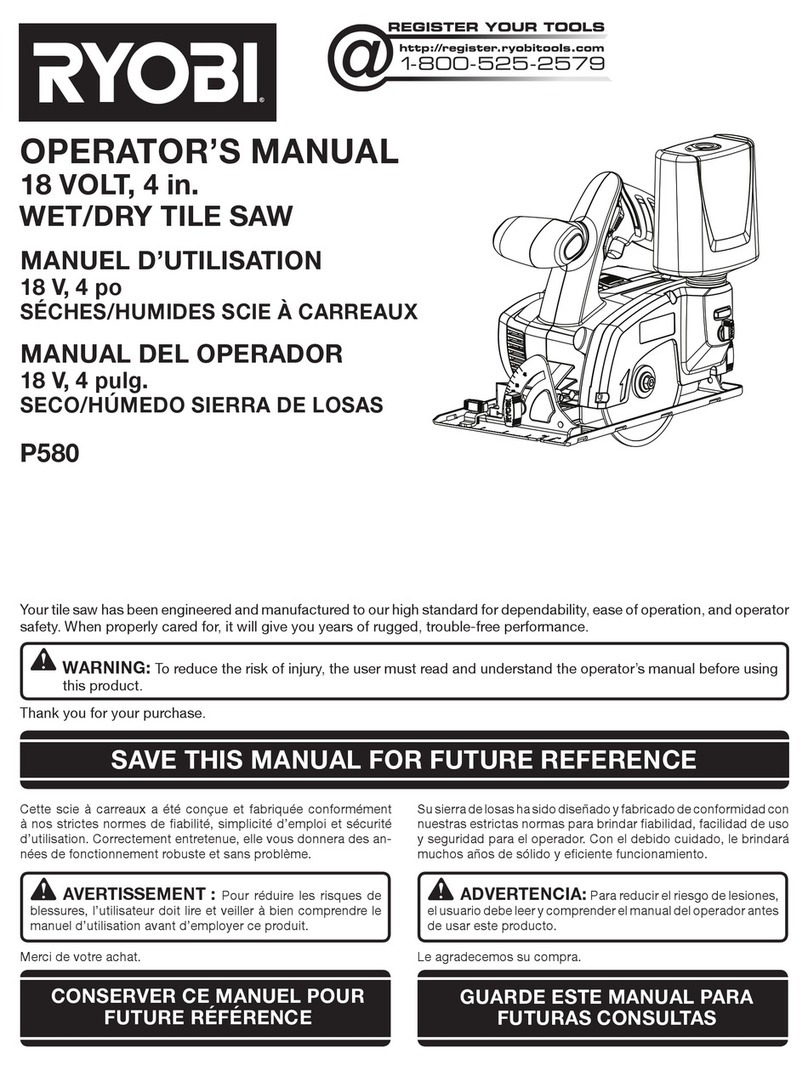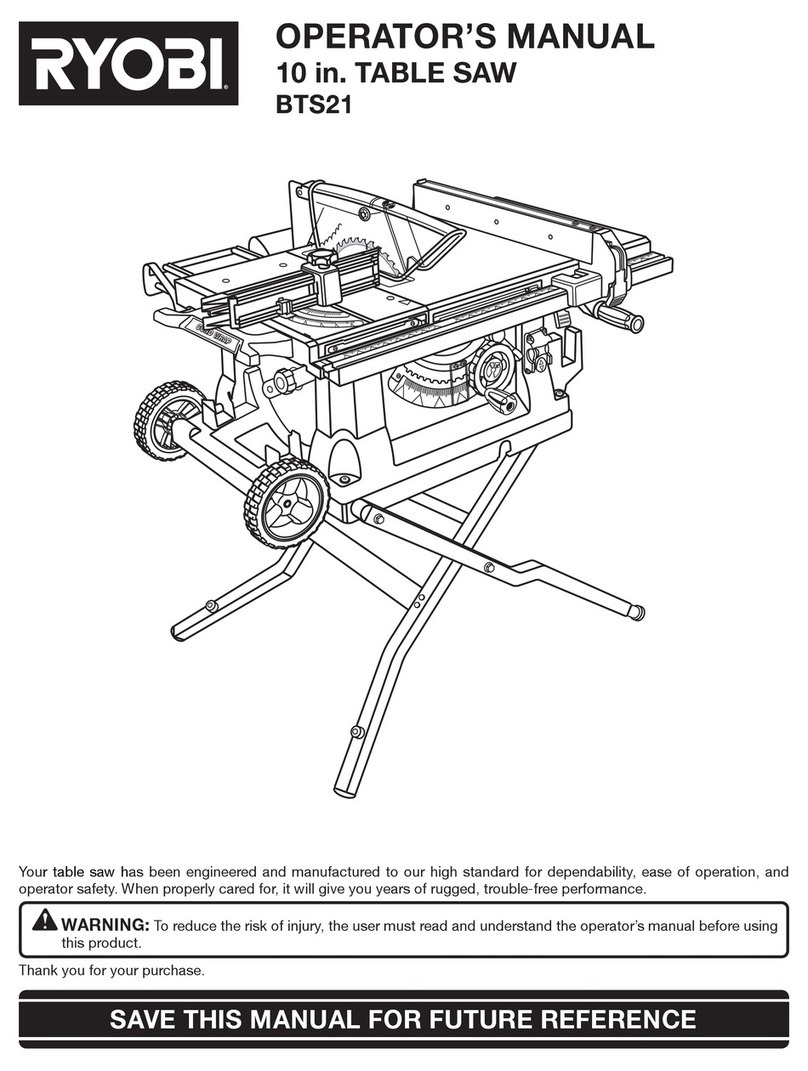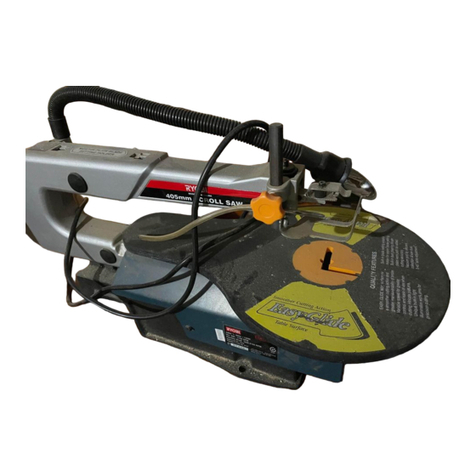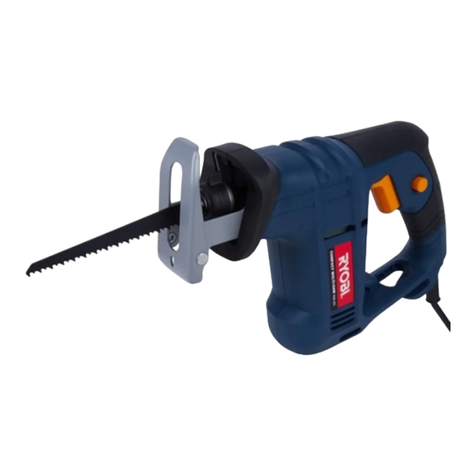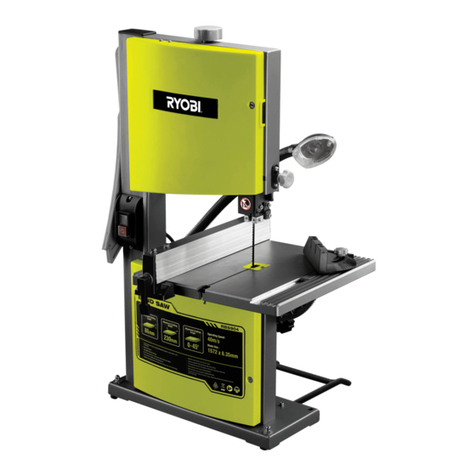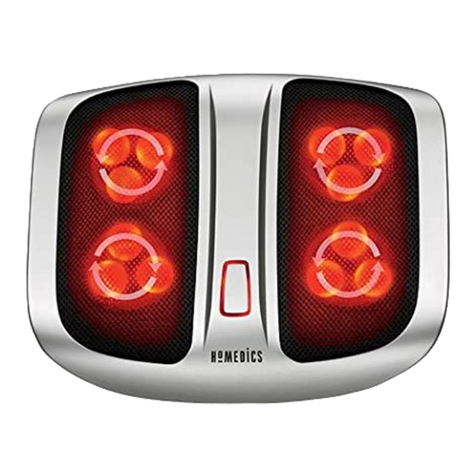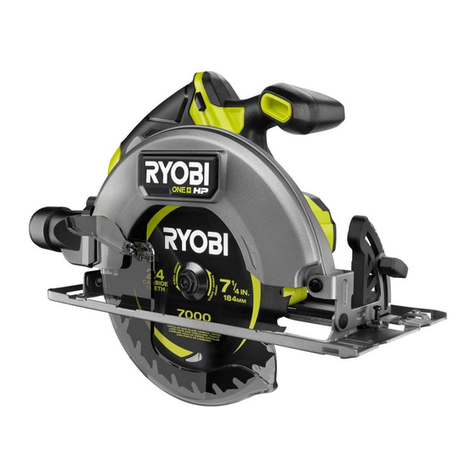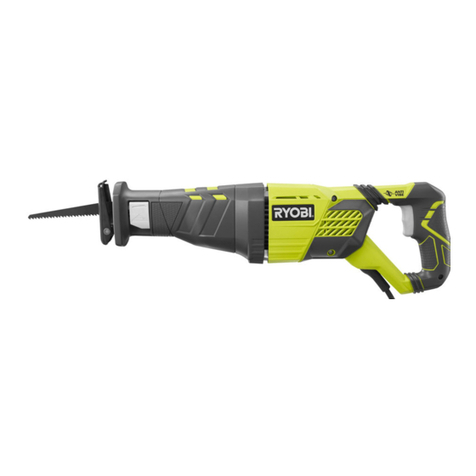
Page 4
RULES FOR SAFE OPERATION
Safe operation of this power tool requires that you read and
understand this operator's manual and all labels affixed to
the tool. Safety is a combination of common sense, staying
alert, and knowing how your band saw works.
READ ALL INSTRUCTIONS
■KNOW YOUR POWER TOOL. Read the operator's
manual carefully. Learn the applications and limitations
as well as specific potential hazards related to this tool.
■GUARDAGAINST ELECTRICAL SHOCK bypreventing
bodycontactwithgrounded surfaces. For example: pipes,
radiators, ranges, refrigerator enclosures.
■KEEP GUARDS IN PLACE and in working order. Never
operate the tool with any guard or cover removed. Make
sure all guards are operating properly before each use.
■REMOVE ADJUSTING KEYS AND WRENCHES. Form
habit of checking to see keys and adjusting wrenches
are removed from tool before turning it on.
■KEEP THE WORK AREA CLEAN. Cluttered work areas
and work benches invite accidents.
■DON’T USE IN DANGEROUS ENVIRONMENTS. Donot
usepower tools near gasoline orother flammable liquids,
in damp or wet locations or expose them to rain. Keep
work area well lighted.
■KEEP CHILDREN AND VISITORS AWAY. All visitors
should wear safety glasses and be kept a safe distance
from work area.
■MAKE WORKSHOP CHILDPROOF with padlocks,
master switches, or by removing starter keys.
■DON’T FORCE THE TOOL. It will do the job better and
safer at the rate for which it was designed.
■USE THE RIGHT TOOL. Do not force the tool or
attachment to do a job for which it was not designed.
■USE THE PROPER EXTENSION CORD. Makesureyour
extension cord is in good condition. When using an
extensioncord, be sureto use oneheavy enough tocarry
the current your product will draw. An undersized cord
will cause a drop in line voltage resulting in loss of power
and overheating.Awire gage size (A.W.G.) of at least 16
is recommended for an extension cord 25 feet or less in
length.If in doubt,use the nextheavier gage.The smaller
the gage number, the heavier the cord.
■WEAR PROPERAPPAREL. Donot wear loose clothing,
neckties, or jewelry that can get caught in the tool’s
movingparts and causepersonal injury. Nonslipfootwear
isrecommendedwhenworking outdoors. Wearprotective
hair covering to contain long hair.
■ALWAYS WEAR SAFETY GLASSES WITH SIDE
SHIELDS. Everyday eyeglasses have only impact-
resistant lenses; they are NOT safety glasses.
■SECURE WORK. Useclampsora vise to hold workwhen
practical. It’s safer than using your hand and it frees both
hands to operate tool.
■DO NOT OVERREACH. Keepproperfootingandbalance
at all times.
■MAINTAIN TOOLS WITH CARE. Keep tools sharp and
cleanforbest and safest performance. Followinstructions
for lubricating and changing accessories.
■DISCONNECT ALL TOOLS. When not in use, before
servicing, or when changing attachments, blades, bits,
cutters,etc., alltools should be disconnected frompower
source.
■REDUCE THE RISK OF UNINTENTIONAL STARTING.
Be sure switch is off when plugging in.
■USE RECOMMENDED ACCESSORIES. Consult the
operator’smanualfor recommended accessories.Theuse
of improper accessories may cause risk of injury.
■NEVER STAND ON TOOL. Serious injury could occur if
thetoolistippedoriftheblade is unintentionally contacted.
■CHECK DAMAGED PARTS. Before further use of the
tool, a guard or other part that is damaged should be
carefullychecked to determine thatitwill operate properly
and perform its intended function. Check for alignment of
moving parts, binding of moving parts, breakage of parts,
mounting and any other conditions that may affect its
operation.Aguard or other part that is damaged must be
properly repaired or replaced by an authorized service
center to avoid risk of personal injury.
■DIRECTION OF FEED. Feed work into a blade or cutter
againstthe direction orrotation of theblade or cutteronly.
■NEVER LEAVE TOOL RUNNING UNATTENDED.
TURN POWER OFF. Don’t leave tool until it comes to a
complete stop.
■DON’T ABUSE CORD. Never carry tool by the cord or
yank it to disconnect from receptacle. Keep cord from
heat, oil, and sharp edges.
■PROTECT YOUR LUNGS. Wear a face or dust mask if
the cutting operation is dusty.
■PROTECT YOUR HEARING. Wear hearing protection
during extended periods of operation.
WARNING: Blade coasts after turn off.
■KEEP TOOL DRY, CLEAN,AND FREE FROM OILAND
GREASE.Alwaysuseaclean cloth when cleaning.Never
use brake fluids, gasoline, petroleum-based products, or
any solvents to clean tool.
■INSPECT TOOL CORDS AND EXTENSION CORDS
PERIODICALLY and, if damaged, have repaired by a
qualifiedservicetechnician.Stay constantly aware of cord
location and keep it well away from the rotating wheel.
■NEVER USE IN AN EXPLOSIVE ATMOSPHERE.
Normal sparking of the motor could ignite fumes.
■USE ONLY OUTDOOR EXTENSION CORDS with
approved ground connection that are intended for use
outdoors and so marked.
■BE SURE THE BLADE PATH IS FREE OF NAILS.
Inspect for and remove nails from lumber before cutting.
